Sectioning and structure
- Title
- Authors and Affiliations
- Abstract
- Keywords
- Introduction
- Sections (Materials and Methods /
Results/Case Study etc)
- Conclusions
- References
- Acknowledgements
- Code availability
- Data availability
- Sample availability
- Appendices
- Author contribution
- Conflicts of interest

Title
The Importance of Titles
The title of your manuscript is usually the first introduction readers (and reviewers) have to your work. Therefore, you must select a title that grabs attention, accurately describes the contents of your manuscript, and makes people want to read further.
- Convey the main topics of the study
- Highlight the importance of the research
- Be concise
- Attract readers
Writing a good title for your manuscript can be challenging. First, list the topics covered by the manuscript. Try to put all of the topics together in the title using as few words as possible. A title that is too long will seem clumsy, annoy readers, and probably not meet journal requirements.
Example:
Does Vaccinating Children and Adolescents with Inactivated Influenza Virus Inhibit the Spread of Influenza in Unimmunized Residents of Rural Communities?
This title has too many unnecessary words.
Influenza Vaccination of Children: A Randomized Trial
This title doesn’t give enough information about what makes the manuscript interesting.
Effect of Child Influenza Vaccination on Infection Rates in Rural Communities: A Randomized Trial
This is an effective title. It is short, easy to understand, and conveys the important aspects of the research.
Think about why your research will be of interest to other scientists. This should be related to the reason you decided to study the topic. If your title makes this clear, it will likely attract more readers to your manuscript.
TIP: Write down a few possible titles, and then select the best to refine further. Ask your colleagues their opinion. Spending the time needed to do this will result in a better title.
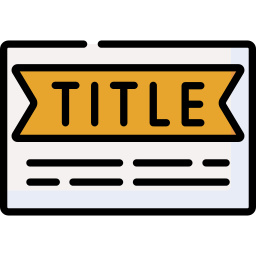
Authors and Affiliations
All authors should check if their degrees are completely listed, their middle names / initials appear, and all their affiliations are correct, complete, and publishable.
- Never enter author names in ALL CAPS
- Note that the order of author degrees can be changed (e.g. from "MPH, PhD" to "PhD, MPH", according to the preferences of the author). Use the arrow up/down buttons in the metadata form to order them
- Ask your co-authors if they have middle names. Many authors use their middle names to make themselves more distinguishable in Medline, e.g. "Smith AJ" instead of "Smith A".
- In affiliation lines, do not use short forms or acronyms, for example an affiliation like "Nursing" should be changed into "Department of Nursing", and acronyms like "UHN" should be resolved, e.g. "University Health Network".
- Affiliations are usually in title case (which means that all words except minor words like "of" or "on" are capitalized). Do not enter information in ALL CAPS or all lower case (department of nursing). Do not abbreviate "Dep." or "Dept.".
- If authors have multiple affiliations, all affiliations must be entered (as separate entries)
- City names, if from US or Canada, MUST be followed by the State/Province abbreviation, e.g. "Bethesda, MD" or "Toronto, ON". Enter the state in the "city" field, separate from city with a comma and blank.

Abstract
The Abstract is:
- A summary of the content of the journal manuscript
- A time-saving shortcut for busy researchers
- A guide to the most important parts of your manuscript’s written content
Many readers will only read the Abstract of your manuscript. Therefore, it has to be able to stand alone. In most cases the abstract is the only part of your article that appears in indexing databases such as Web of Science or PubMed and so will be the most accessed part of your article; making a good impression will encourage researchers to read your full paper.
A well written abstract can also help speed up the peer-review process. During peer review, referees are usually only sent the abstract when invited to review the paper. Therefore, the abstract needs to contain enough information about the paper to allow referees to make a judgement as to whether they have enough expertise to review the paper and be engaging enough for them to want to review it.
- What was done?
- Why did you do it?
- What did you find?
- Why are these findings useful and important?
Answering these questions lets readers know the most important points about your study, and helps them decide whether they want to read the rest of the paper. Make sure you follow the proper journal manuscript formatting guidelines when preparing your abstract.
TIP: Journals often set a maximum word count for Abstracts, often 250 words, and no citations. This is to ensure that the full Abstract appears in indexing services.

Keywords
Keywords are a tool to help indexers and search engines find relevant papers. If database search engines can find your journal manuscript, readers will be able to find it too. This will increase the number of people reading your manuscript, and likely lead to more citations.
However, to be effective, Keywords must be chosen carefully. They should:
- Represent the content of your manuscript
- Be specific to your field or sub-field
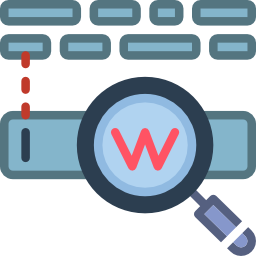
Introduction
The Introduction should provide readers with the background information needed to understand your study, and the reasons why you conducted your experiments. The Introduction should answer the question: what question/problem was studied?
While writing the background, make sure your citations are:
- Well balanced: If experiments have found conflicting results on a question, have you cited studies with both kinds of results?
- Current: Every field is different, but you should aim to cite references that are not more than 10 years old if possible. Although be sure to cite the first discovery or mention in the literature even if it older than 10 years.
- Relevant: This is the most important requirement. The studies you cite should be strongly related to your research question.
TIP: Do not write a literature review in your Introduction, but do cite reviews where readers can find more information if they want it.
Once you have provided background material and stated the problem or question for your study, tell the reader the purpose of your study. Usually the reason is to fill a gap in the knowledge or to answer a previously unanswered question. For example, if a drug is known to work well in one population, but has never been tested in a different population, the purpose of a study could be to test the efficacy and safety of the drug in the second population.
The final thing to include at the end of your Introduction is a clear and exact statement of your study aims. You might also explain in a sentence or two how you conducted the study.
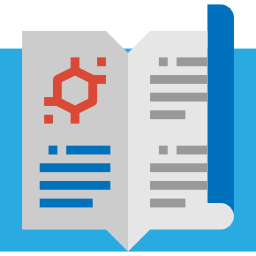
Materials and Methods
This section provides the reader with all the details of how you conducted your study. You should:
- Use subheadings to separate different methodologies
- Describe what you did in the past tense
- Describe new methods in enough detail that another researcher can reproduce your experiment
- Describe established methods briefly, and simply cite a reference where readers can find more detail
- State all statistical tests and parameters

Results / Discussions
In the Results section, simply state what you found, but do not interpret the results or discuss their implications.
- As in the Materials and Methods section, use subheadings to separate the results of different experiments.
- Results should be presented in a logical order. In general this will be in order of importance, not necessarily the order in which the experiments were performed. Use the past tense to describe your results; however, refer to figures and tables in the present tense.
- Do not duplicate data among figures, tables, and text. A common mistake is to re-state much of the data from a table in the text of the manuscript. Instead, use the text to summarize what the reader will find in the table, or mention one or two of the most important data points. It is usually much easier to read data in a table than in the text.
- Include the results of statistical analyses in the text, usually by providing p values wherever statistically significant differences are described.
TIP: There is a famous saying in English: “A picture is worth a thousand words.” This means that, sometimes, an image can explain your findings far better than text could. So make good use of figures and tables in your manuscript! However, avoid including redundant figures and tables (e.g. two showing the same thing in a different format), or using figures and tables where it would be better to just include the information in the text (e.g. where there is not enough data for a table or figure).
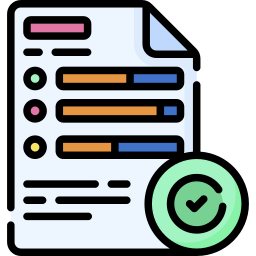
Conclusion
Your Discussion and Conclusions sections should answer the question: What do your results mean?
In other words, the majority of the Discussion and Conclusions sections should be an interpretation of your results. You should:
- Discuss your conclusions in order of most to least important.
- Compare your results with those from other studies: Are they consistent? If not, discuss possible reasons for the difference.
- Mention any inconclusive results and explain them as best you can. You may suggest additional experiments needed to clarify your results.
- Briefly describe the limitations of your study to show reviewers and readers that you have considered your experiment’s weaknesses. Many researchers are hesitant to do this as they feel it highlights the weaknesses in their research to the editor and reviewer. However doing this actually makes a positive impression of your paper as it makes it clear that you have an in depth understanding of your topic and can think objectively of your research.
- Discuss what your results may mean for researchers in the same field as you, researchers in other fields, and the general public. How could your findings be applied?
- State how your results extend the findings of previous studies.
- If your findings are preliminary, suggest future studies that need to be carried out.
- At the end of your Discussion and Conclusions sections, state your main conclusions once again.

References
As references have an important role in many parts of a manuscript, failure to sufficiently cite other work can reduce your chances of being published. Every statement of fact or description of previous findings requires a supporting reference.
TIP: Be sure to cite publications whose results disagree with yours. Not citing conflicting work will make readers wonder whether you are really familiar with the research literature. Citing conflicting work is also a chance to explain why you think your results are different.
It is also important to be concise. You need to meet all the above needs without overwhelming the reader with too many references—only the most relevant and recent articles need to be cited. There is no correct number of references for a manuscript, but be sure to check the journal’s guidelines to see whether it has limits on numbers of references.
TIP: Never cite a publication based on what you have read in a different publication (such as a review), or based only on the publication’s abstract. These may mislead you and readers. Read the publication itself before you cite it, and then check the accuracy of the citation again before submitting your manuscript.
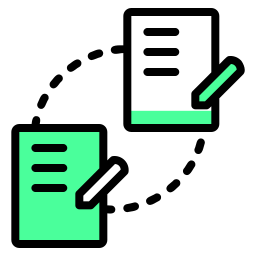
Acknowledgments
This usually follows the Discussion and Conclusions sections. Its purpose is to thank all of the people who helped with the research but did not qualify for authorship. Acknowledge anyone who provided intellectual assistance, technical help (including with writing and editing), or special equipment or materials.

Code and Data Availability
Authors are strongly encouraged to make all materials used to conduct their research available to other researchers. Research materials necessary to enable the reproduction of an experiment should be clearly indicated in the Materials and Methods section. Relevant materials such as protocols, analytic methods, and study material should preferably be uploaded to an online repository providing a global persistent link/identifier. If this is not possible, authors are strongly encouraged to make this material available upon request to interested researchers, and this should be stated in the manuscript.
Examples of Data/Materials availability statements
- The data that support the findings of this study are openly available in [repository name] at [URL], reference number [reference number].
- The data that support the findings of this study are available in [repository name] at [URL/DOI], reference number [reference number]. These data were derived from the following resources available in the public domain: [list resources and URLs]
- The authors confirm that the data supporting the findings of this study are available within the article [and/or] its supplementary materials.
- Raw data were generated at [facility name]. Derived data supporting the findings of this study are available from the corresponding author [initials] on request.
- The data used to support the findings of this study are available from the corresponding author upon request.
Basic Policy
The Journal strongly suggests that authors make all code and, if possible, data underlying the findings described in their manuscript available without restriction. If data cannot be made available due to confidentiality concerns, then this should be stated, together with a description of how others could potentially access the data.
Code and, where appropriate, data shall be deposited in repositories that meet accepted criteria as trustworthy digital repositories. The Journal does NOT publish supplementary materials itself. Personal websites, links to subscription-based online storage facilities (Dropbox, Google Drive, etc.), and online code repositories (Github, Bitbucket, etc.) are generally not acceptable, as they do not ensure persistence.
The Journal strongly encourages authors to also cite acceptable code and data repositories as part of the references. In general, acceptable code and data repositories provide persistent identifiers, such as DOIs, and maintain robust long-term archives.
This data policy will be implemented on January 1, 2020. Any paper submitted before that date will not have a data availability statement.
Required Information
- The Code and Data Availability Statement must specify where code and data are each permanently deposited, listing the name(s) of repositories along with digital object identifiers or accession numbers for the relevant data sets.
- The Code and Data Availability Statement must specify the conditions under which the deposited materials can be retrieved. A taxonomy is being developed, but a non-limiting list of possible options might be access by download, possibly with (free) account creation and/or click-through license, access via a formal application process, specifying the conditions that an applicant may need to meet (nationality, membership in professional associations, security clearance, etc.) and for-fee access (purchase or subscription), stating the fee and conditions of use
- The Code and Data Availability Statement must specify the archival and curation policy of the institution curating the objects. For instance, the materials might remain accessible for 5 years, or "permanently".
Guidance
- We note that typical "code repositories" (Github, Gitlab) and cloud-based storage systems (OneDrive, Google Drive, Dropbox, Amazon S3) do not qualify as permanent repositories, as objects in them can be deleted or reorganized at any time, and may rely on subscription services to remain available.
- However, we also note that it is possible to link such repositories to formal archives. An example is Making Your Code Citable. Alternatively, some repositories include within their workflow the ability to generate permanent archives with DOIs (Open Science Framework, Figshare).
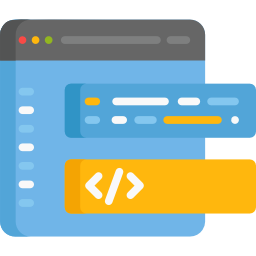
Appendices
Authors can use Appendixes to add further information to support the results reported in the manuscript. They should be used when including the information in the main text would disrupt the flow for readers or where only a minority of the audience is expected to be interested. Appendixes may include full details of lengthy mathematical proofs, additional figures, further experimental details, or additional data. If the information is very lengthy, or in a format that does not work well on a printed page, it may also be included as supplementary material.
Note that sections in the Appendix are labelled with capital letters (as opposed to numbers, which are in the main text) and that all Appendixes must be cited in the main text. Figures or Equations in an Appendix are prefixed with ‘A’ (regardless of the section) and in supplementary material with ‘S’, and numbering begins from 1 at the beginning of the Appendix or Supplementary files (i.e. Figure A1, Figure A2, . . .).
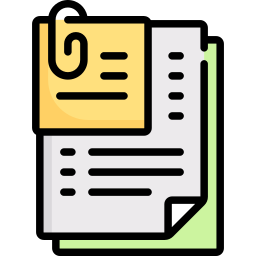
Author contribution
The Author Contributions Statement is mandatory and should represent all the authors. It can be up to several sentences long and should briefly describe the tasks of individual authors.
Examples of author contribution statements
- A.B. and B.C. conceived of the presented idea. A.B. developed the theory and performed the computations. C.D. and D.E. verified the analytical methods. B.C. encouraged A.B. to investigate [a specific aspect] and supervised the findings of this work. All authors discussed the results and contributed to the final manuscript.
- A.B. and B.C. carried out the experiment. A.B. wrote the manuscript with support from C.D.. D.E. and E.F. fabricated the XYZ sample. F.G. and G.H. helped supervise the project. G.H. and H.I. conceived the original idea. H.I. supervised the project.
- A.B. developed the theoretical formalism, performed the analytic calculations and performed the numerical simulations. Both A.B and B.C. authors contributed to the final version of the manuscript. B.C. supervised the project.
- A.B., B.C., C.D., D.E., E.F., F.G., and G.H. conceived and planned the experiments. A.B., B.C., C.D. and D.E. carried out the experiments. A.B., F.G. and E.F. planned and carried out the simulations. J.K., K.L., A.B., B.C., D.E., C.D., F.J., and F.G. contributed to sample preparation. A.B., B.C., C.D., D.E., FJ, E.F., F.G. and G.H. contributed to the interpretation of the results. A.B. took the lead in writing the manuscript. All authors provided critical feedback and helped shape the research, analysis and manuscript.
- A.B., B.C., C.D. and D.E. contributed to the design and implementation of the research, to the analysis of the results and to the writing of the manuscript.

Conflict of Interest
A conflict of interest can occur when you (or your employer or sponsor) have a financial, commercial, legal, or professional relationship with other organizations, or with the people working with them, that could influence your research.
The journal editor will firstly use this information to inform his or her editorial decisions. They may then publish such disclosures to assist readers in evaluating the article. Or, instead, the editor may decide not to publish your article on the basis of any declared conflict. You can declare the conflict of interest on your cover letter or on the manuscript submission form in the journal’s online peer-review system.
Personal conflicts of interest
Potential conflicts of interest in relation to your submitted manuscript could include:
- Consultancies
- Employment
- Advocacy groups
- Grants
- Fees and honoraria
- Patents
- Royalties
- Stock or share ownership
If necessary, please describe any potential conflicts of interest in a covering letter. In addition, you should fully acknowledge all funding sources supporting the work.
- John Smith declares no conflicts of interest. Jane Williams has received a research grant from Organization A. Mike Miller is an employee and owns stock in Company B.
- We have no conflicts of interest to disclose.
- All authors declare that they have no conflicts of interest.

Cover Image
What is a cover image?
A cover image is usually a wide image used as a cover photo for a new section in a blog post or article post. It is part of the overall article.
Why are Article post cover image important?
The article post cover image is the first thing that the reader will see. It should be attractive and intriguing enough to make them want to click on it and read on. The cover image provides a preview of what the article/blog is about and what the reader can expect from it. If it doesn’t intrigue them, they won’t read any further. When used correctly, your cover image can leave a lasting impact on your audience - so take advantage of it and put the effort into creating an image that shows off your personality, and inspires people to check out the rest of your content.
How to search Cover Image : Click Here
Find Free Cover Images You Would Actually Use for Your Article.
- Unsplash.
- Burst (by Shopify)
- Pexels.
- Pixabay.
- Free Images.
- Kaboompics.
- Stocksnap.io.
- Canva.
find more website of image : Click Here
